|
Arlington Naval Air Museum
Boeing Future of Flight Center
Canadian Museum of Flight
Evergreen
Aviation and Space Museum
Flying Heritage Museum
Fort Lewis Museum
Historic Flight Museum
Heritage Flight Museum
McChord AFB Museum
Museum of Flight
Museum of Flight Restoration Center
Tillamook Air Museum
Warbird and
Aviation Museums of the Pacific Northwest
Flying Heritage Museum - Paine Field, Everett, WA
May 28, 2012
This is not a comprehensive photo page of all of the aircraft in the
museum, but just a few that I found interesting and rare.
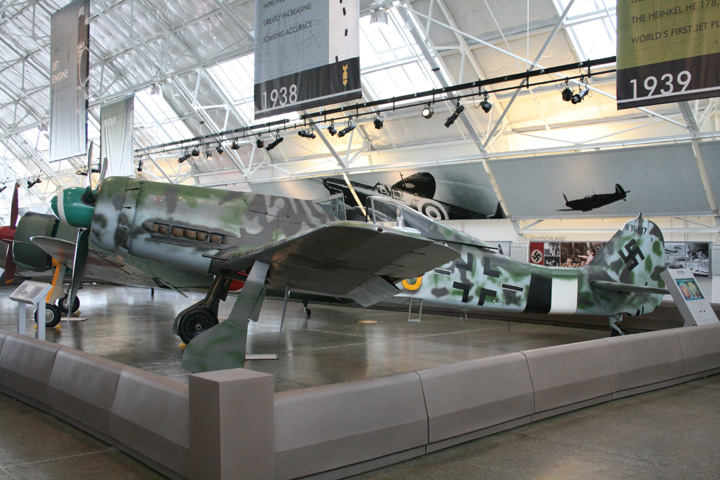
This is the only example left in
the world of the rare FW-190D-13. The docent told me this is an $8
million warbird which is not flown due to its rarity.
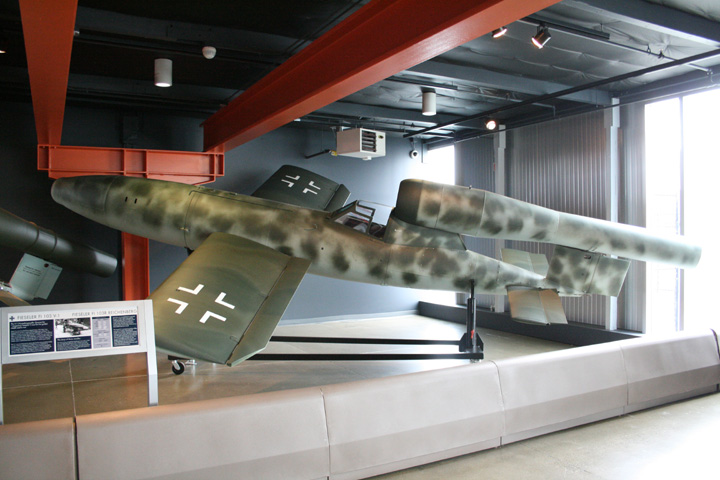
I did not even know there was a manned version of the
V-1. In theory the pilot would be able to bail out after aiming it at
its target. Due to developmental issues the 70 or so pilots that
volunteered to fly this who might have had some chance of survival
flying it were all sent to the Eastern Front where they had no chance of
survival. They probably all volunteered because they figured anything
was better than the Eastern Front!!
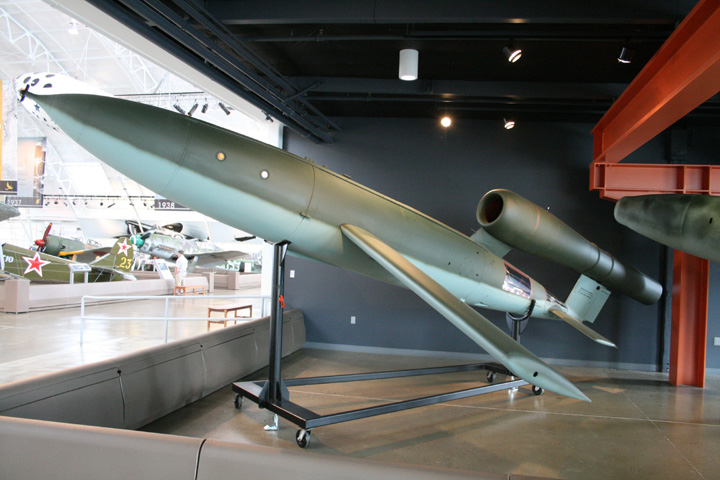
Both of these V-1s were buried the cave they
were built in during WWII, the entrances to the cave destroyed by the
Soviets in 1948. In the late 20th century a new entrance was found and
these two original V-1s were purchased by the museum in 2001. Most
"V-1s" found in museums today are actually US built JB-2s, so these two
examples are extremely rare.
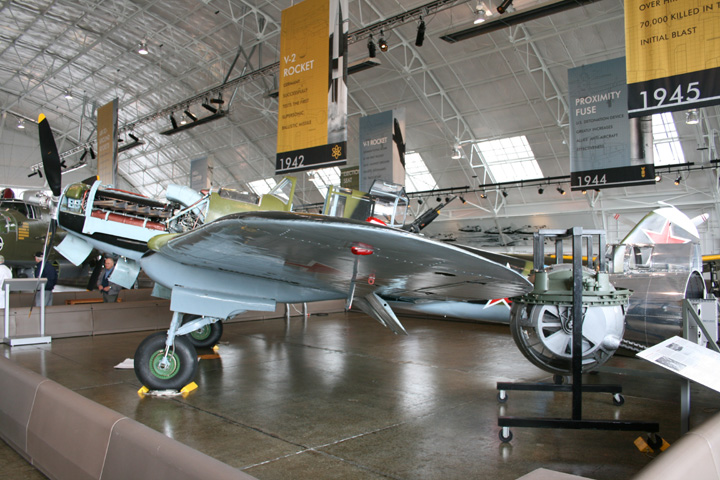
This I believe is the only flyable ILyushin IL-2 in the world and should
have flown for the first time in the US on Fatherís Day weekend of 2012. Unfortunately there is so much around it the aircraft gets lost
in the clutter.
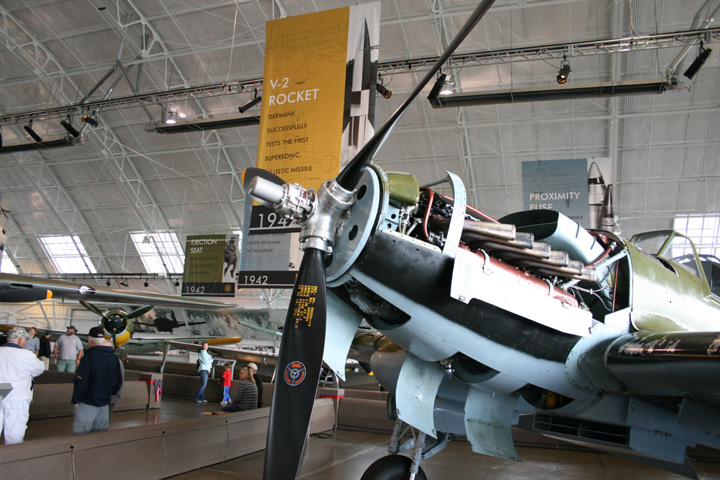
The FAA was
underwhelmed by the lack of documentation on the engine and prop, which
had to be replaced with American items.
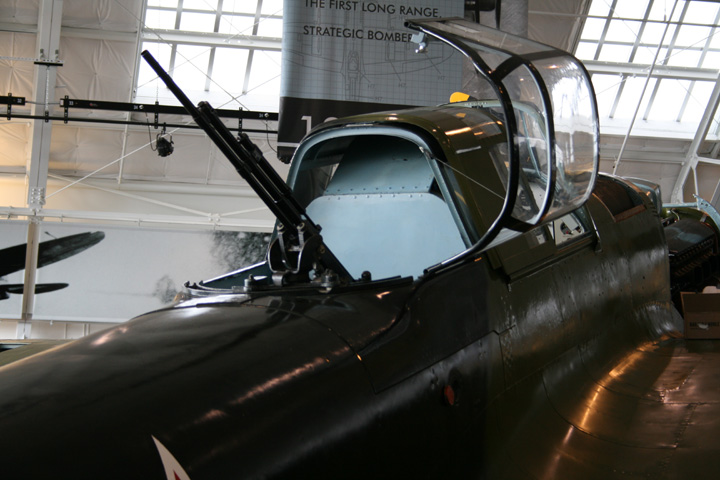
Tail gunners suffered four times more casualties than the pilots. Note
that there is armor plate behind the gunner protecting the pilot while
the rear gunner had nothing. Actually the rear gunner was sort of like
soft armor for the pilot, slowing down any projectiles before they
strike the armor plate. The IL-2 also had a metal plate under the pilot
to protect him from ground fire. However, as the gunnerís position was
an afterthought the metal plate did not extend back and protect him.
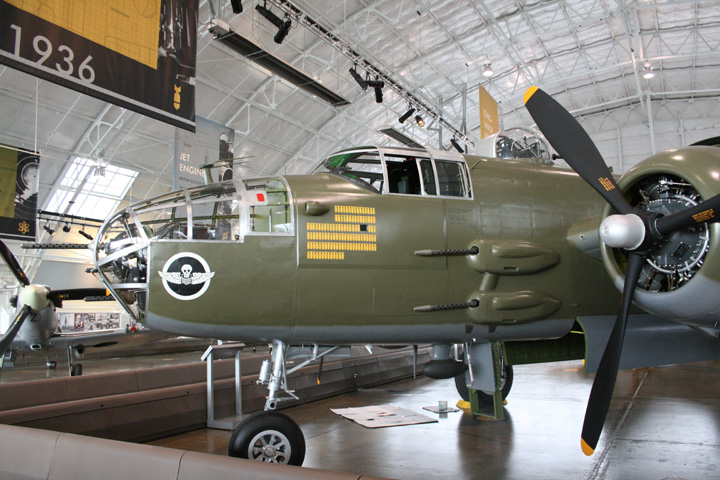
According to the docent that I spent at least an hour with, this is
supposed to be the most well restored B-25 in existence which could very
well be true. However, I am not sure about
the package guns. The docent told me that they were angled down from
the line of flight in order for the aircraft to fly level and be able to
strafe down a path. However, I am really wondering about this and its
accuracy and authenticity on a B-25, unless it was one off field
modification that the B-25 that is depicted by this restoration used. I
have never seen any photos of any B-25 having its package guns that were
anything but parallel to the line of flight. This sort of assumes the
enemy has laid out the targets in a straight line for this aircraft to
strafe. This may also have rendered the gun sight somewhat useless.
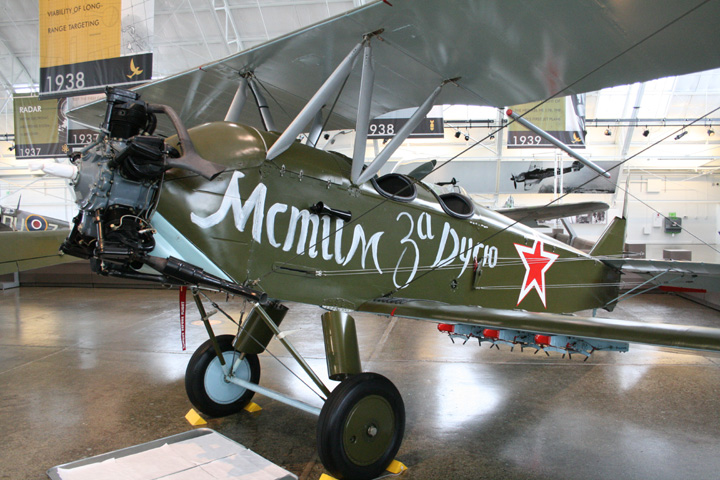
The PO-2 was not only used by the Russian female "Night Witches" pilots to
bomb and harass German troops at night but was employed against UN forces
in the Korean War as well. The "Night Witches" signature bombing
tactic was to fly close to the ground, turn of the engine and then glide
in before dropping the bombs.
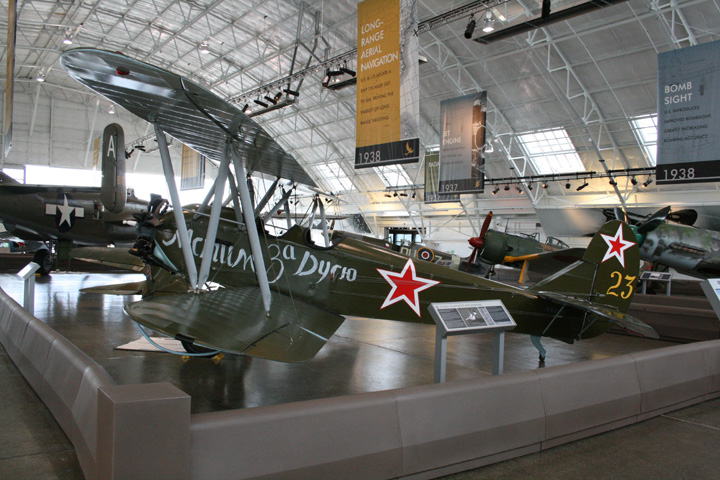
This PO-2 was built in 1944 and recovered from Belarus. The 23 on
the tail signifies the number of "Night Witches" that won the Hero
of the Soviet Union during the war.
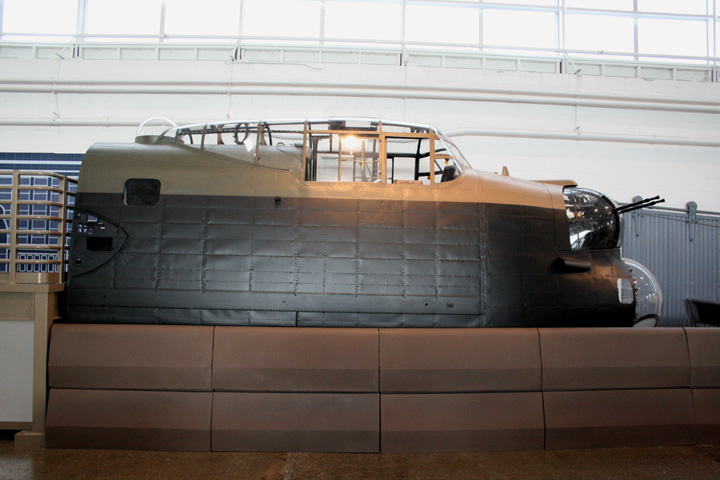
This front fuselage of a Lancaster came from a museum in Great Britain.
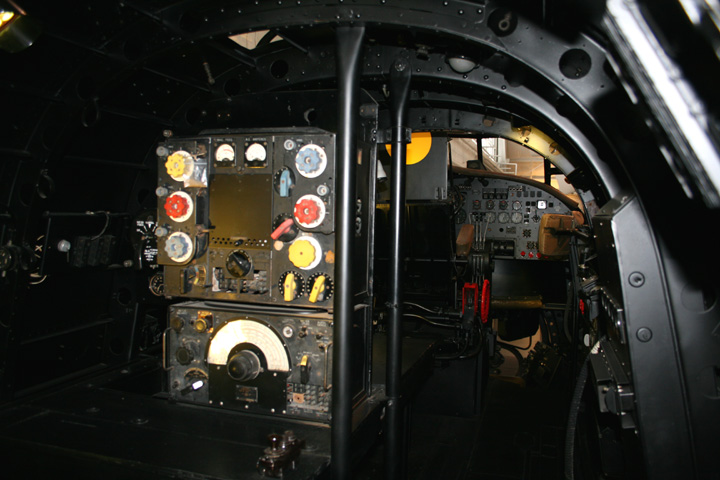
Here we are looking forward from the radio operator's area, past the
flight engineer's instruments on the right and up into the flight deck.
The orange or yellow painted circle on the back of the pilot's seat is a
poison gas indicator which will change color if the aircraft has flown
through gas. Because the crew would have oxygen masks on they would
have not realized it was being used against them. There is also a
similar circle on the front of the pilot's seat. This is similar to
the upper arm gas indicators worn by the invading forces on D-Day.
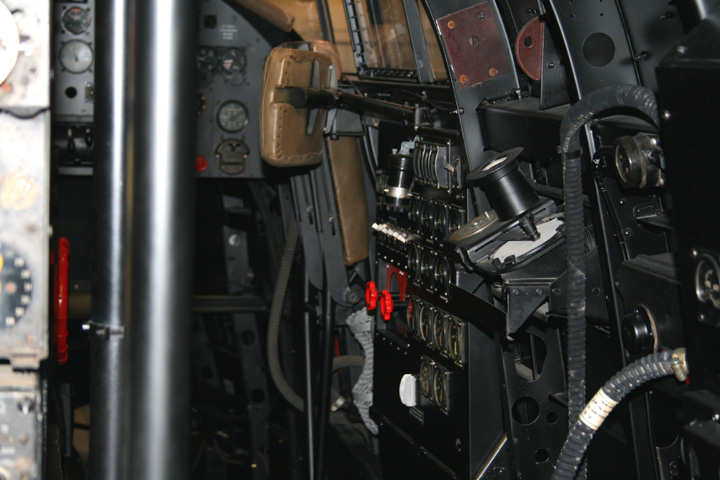
The Flight Engineer's station. His brown fold down seat can be seen
up by the instrument panel.
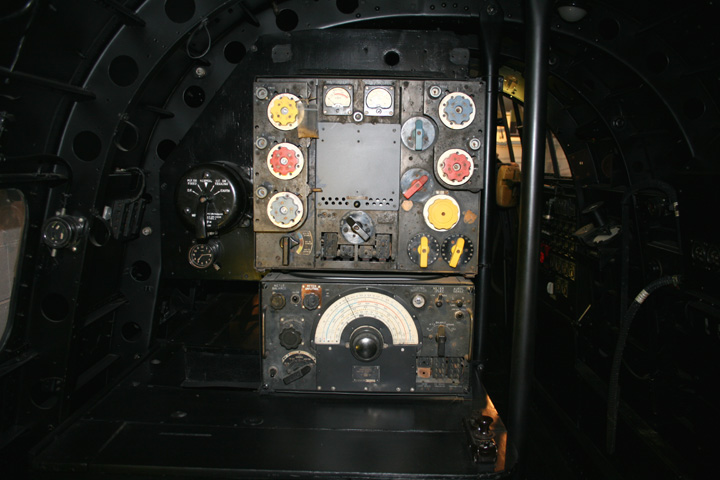
The transmitter is on the top and the receiver on bottom in the radio
compartment.
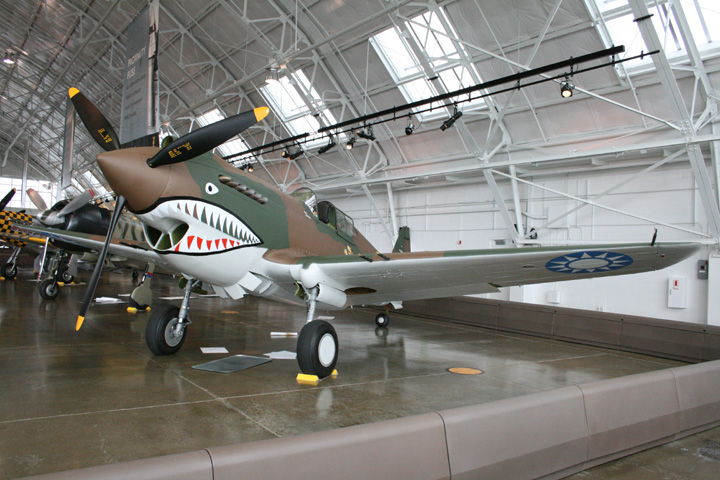
This P-40C was built in 1941 and sent to the Soviet Union where it
defended Murmansk until September 27, 1942, when the oil cooler took hits
and the aircraft made an emergency landing in a field. It was
"found" in the early 1990s and ended up at this museum in 1999 after being
rebuilt in Chino. It would have been so much more appropriate to
have painted this in its original wartime colors.
Arlington Naval Air Museum
Boeing Future of Flight Center
Canadian Museum of Flight
Evergreen
Aviation and Space Museum
Flying Heritage Museum
Fort Lewis Museum
Historic Flight Museum
Heritage Flight Museum
McChord AFB Museum
Museum of Flight
Museum of Flight Restoration Center
Tillamook Air Museum
|













